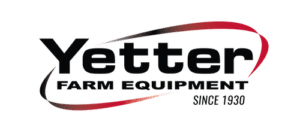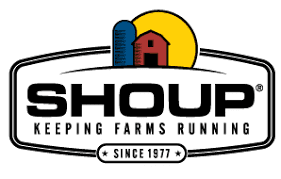Precision Planting
The sales team here at RDK Enterprises, together with our growers, will develop a plan to address any and all areas of concern.
Precision Planting is a leader in providing the farmer with enhancements to their planters. Increasing your bottom line is priority number one for everyone here at RDK, and while we provide planter upgrades, they are not the only way a grower can increase production. Maintenance, setup, and attention to detail will allow you to get the most out of every planter pass.
Monitoring & Measurement
20|20
Data drives decisions
High-definition agronomic technology
From knowledge to ultimate control
FlowSense
See What is Really Happening
Moving to Control
SmartFirmer
Get the Seed Environment Right
With SmartFirmer you will have confidence in the environment that every seed is in.
Soil Moisture Sensing
Soil Temperature Sensing
Furrow Uniformity
Residue Sensing
Organic Matter Sensing
Organic Matter Control
SmartFirmer pairs with 20|20 in the cab and vDrive, vApplyHD, and mSet on the planter in order to control different variables by organic matter.
YieldSense
Making Decisions in the Combine Cab
Spatial Accuracy Matters
Why it Works
Setup is Simple with YieldSense
Downforce Control
AirForce
Environments in Your Fields Change
As you plant your fields, you encounter changing environments. Soil types change, drainage changes, elevation changes, and with each of these changes, the amount of downforce needed changes. With springs or air bags, you are left guessing at the correct setting as well as having to remember to make the necessary adjustment. Even worse, sometimes you would have to get out of the cab. Often, your down pressure setting ends up being wrong.
The Cost of Wrong
Incorrect downforce settings cause one of two issues; compaction or loss of depth. Compaction created by excess force carried on the planter’s depth gauge wheels will compact soil and remove pore space in the soil. This tight soil doesn’t allow roots to grow like they want to, and either causes the roots to turn or become smaller. When this happens, the plant sets a smaller ear because it is under stress. If the operator sets downforce too light, the opposite problem occurs. With too little downforce, the seed trench is not created at the depth that the row unit was set to, and the seeds are placed shallow, in dry soil, causing late emergence and smaller ears or barren plants.
Measurement of Gauge Wheel Weight
DeltaForce
Variability – You Have It
See What Isn’t Seen
Row by Row Accuracy
Every second, these reactions are happening multiple times, making sure that every seed on every row is at the depth that has been chosen, and in an environment to thrive. Stop being blindsided by compaction and get the control that only DeltaForce provides.
SeederForce
See Your Seeder Differently Than You Ever Have
- Setting air seeder downforce only allows one setting across the entire machine
- SeederForce automatically adjusts the downforce on sections or rows of the air seeder
- SeederForce pairs with 20|20 to control downforce and also show seed distribution
Manual Down Force Adjustments Don’t Cut It
Identifying the Problem
Measurements Lead to Adjustments
Downforce Plus Seeding Visibility
Emergence
CleanSweep
After a While, I Stop Adjusting Them
Simple System, Big Payback
FurrowForce
What Environment Should the Seed Be In?
FurrowForce Gives You Visibility
Keeton Seed Firmer
A Common Problem
A Simple Solution
Ready Row Unit
Keep Your Planter, Spend Money on What Makes You Money
The Precision Planting Ready Row Unit solves both issues: replace your current row units with a retrofit row unit and then build on that row unit with the latest technology
Customized to Your Farm
Reveal
Product Information
How Reveal is Different
- Reveal is frame-mounted, eliminating the negative effects that row unit-mounted row cleaners have on row unit ride and changing downforce requirements.
- Reveal has an internal gauge wheel, meaning that the depth of the cleaning tines is set from the cleaned soil only instead of soil+residue like traditional row cleaners.
- Reveal has independent adjustment of pressure and cleaning tine depth, meaning that you can set the pressure you need to keep the internal gauge wheel on the ground, which eliminates bounce of the row cleaner. Then use a T-handle to set how deep the cleaning tines operate for excellent cleaning.
Consistently Clean Residue
Liquid Control & Delivery
Conceal
Nitrogen Application at the Right Time, in the Right Way
- Broadcasting nitrogen on the soil surface doesn’t put it where the plant will use it
- Many planter attachments for nitrogen interfere with other aspects of the planter
- Conceal places nitrogen in a band in the correct relationship to the seed
Broadcast Applications Are Inefficient
Plants Need Fertilizer While They Are Growing
Conceal Puts Nitrogen Where It Should Be
FurrowJet
Ideal Starter Fertilizer Placement
- Phosphorus starters are immobile in the soil
- Move some fall applied P to planter applied P and gain efficiency
- FurrowJet places starter where seedling and crown roots can access it
Phosphorus Doesn't Move
Place Phosphorus Perfectly
See it Work
vApplyHD
Liquid systems are usually confusing
Variability with speed
Row to row variability
Solving Problems with Simplicity
Flow measurement, flow control, turn compensation, variable rate prescriptions. All of this done by the on row vApplyHD module.
Meters
eSet
Impeccable Singulation for John Deere Meters Without Adjustment
- Many vacuum meters require adjustments to double eliminators or vacuum in order to try to be accurate
- These adjustments still leave performance less than desired
- eSet replaces internal components of your John Deere vacuum meter to provide adjustment free accuracy
Simple Upgrade, Big Change in Your Stands
mSet
They Are Different, So Why Not Treat Them Differently?
Multi-Hybrid Planting for Improved Profitability
Seeing the Variation
Build Your System
RowFlow
Hydraulic Motor Control
For the Planter You Already Own
vDrive
Remove Complex Drive Systems
Save Time
Save Seed With Row Shut Off
Variable Rate Done Flawlessly
vSet Select
No More Missed Yield Potential. Multi-Hybrid Planting is Here.
With vSet Select, there are no compromises. You can plant two hybrids in the same row, switching back and forth as environments change, to plant the hybrid that will produce the most in each environment. That maximizes yield.
Any mapping software can make the two-hybrid prescription shape file that is used by vSet Select, or operators can manually switch from one hybrid to another.
Complexity Made Simple
Problems Solved
vSet
Perfect Singulation
Plant More Than Corn and Soybeans?
Seed Delivery
BullsEye
Place Seeds Properly
- Many seed tubes wear at their exit causing poor spacing as seeds exit the tube
- Some seed sensors cause seed bounce in the seed tube
- BullsEye tubes have long life and a smooth path to the trench
Avoid Premature Wear
Eliminate Spacing Issues
SpeedTube
Work With Weather, Not Against It
Think Agile, Not Cumbersome
Controlled Speed Wins
A Complete High-Speed System
WaveVision
See Your Population Accurately
- Traditional seed sensors count seeds and dust
- When population is reported incorrectly, you feel uneasy
- WaveVision sensors count only seeds for accurate population counts
Have Confidence
See What You’re Really Planting
By using high-frequency radio waves, WaveVision measures mass instead of shape. So seed can’t be confused with dust particles. You’ll get the population you want. And you’ll see more accurate information so you can have peace of mind — you’re doing the right thing.
Brands We Work With
RDK Enterprises offers a full line of products from Precision Planting.
If you’re interested in ordering any Precision Planting products not listed above, please contact us.
































